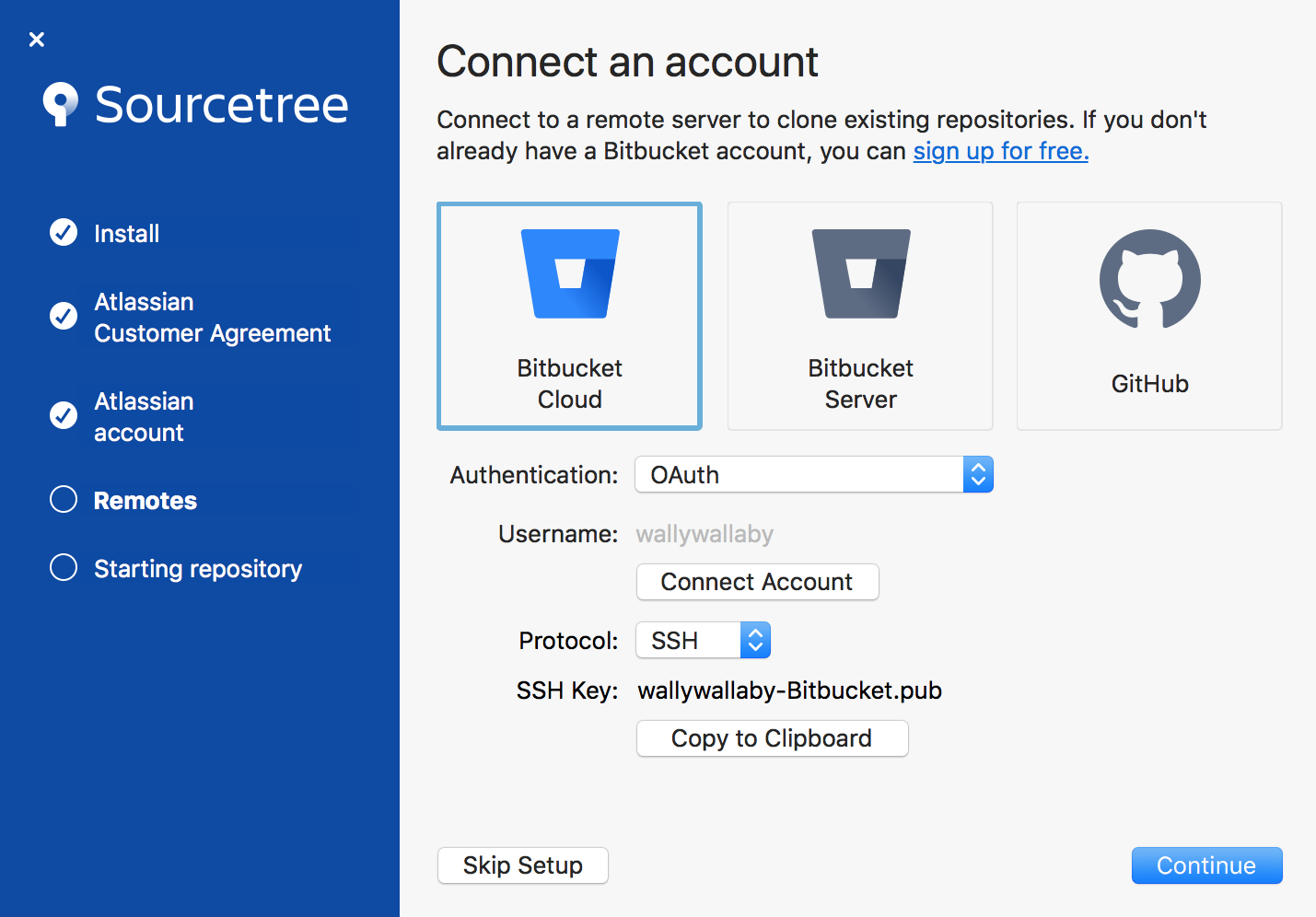

- Bitbucket sourcetree install#
- Bitbucket sourcetree code#
- Bitbucket sourcetree Pc#
- Bitbucket sourcetree license#
- Bitbucket sourcetree free#
Open Sourcetree, select the gear icon and then select Accounts.Ħ.
Bitbucket sourcetree install#
Install Sourcetree as you would any other installation. Select the button for downloading Sourcetree from the Sourcetree website.ĭouble-click the downloaded file to open it. Install Sourcetree for Bitbucket Data Center and Server
Bitbucket sourcetree free#
Sourcetree provides you with an interface that gives you the same capabilities you have with Git without the need to use the command line. If you prefer to use Git from the command line, feel free to skip this step. Clone your repository and manage files locally.Create a personal repository for the tutorial.The repo will now be cloned from Beanstalk down to your destination folder on your PC. Specify any “Name” that is appropriate.ġ3. Bookmark – leave that ticked, so you can easily go back to it later.ġ1. You should then get back “This is a GIT repository”ĩ. You should now see “Checking repository source” and a spinner. Click away from the text field – some checks will be done and you should see a message saying “Accept server’s key” – click “Yes” here.Ĩ. Stay on the first opening tab (Clone Repository) and paste the URL copied from above.ħ. Click “Clone/New” from the icon toolbar.Ħ. Top right of the repo page is the “Your GIT Repository URL” – choose SSH hereĥ. You should now see the new “mark-pc” key in the list of SSH Public Keys, hurrah! Add a repoĢ. Add a label if you wish – mine is “mark-pc”ĩ. Go back to Beanstalk where you left it, and paste in the clipboard contents to the “SSH Key” fieldħ. Click “Profile & Settings” top right and login again if requiredĦ. Click “OK” to close the options dialog box. Still on General tab, click “…” next to the project folder, and choose your base folder – in my case it is D:\Wamp\WWW\ġ0. Browse to the folder as step 3, and choose the. Click the “…” button next to the SSH KeyĨ. Type in your passphrase from step 3 above.ħ. Browse to the private key file (mine was UserData.
Bitbucket sourcetree Pc#
Whenever you have Sourcetree running there will be an app running called “Pageant” which is the PuTTY authentication agent – it’s a blue PC with a hat icon – yeah, kinda catchy hey.

Close the “Generate” dialog box altogether. Very important – Select the entire public key that’s been generated in the text box at the top and copy it to the clipboard!ħ. Click “Save public key” and save it to the same folder, so save it again as sourcetree as it doesn’t have an extensionĦ. ssh) and save with filename of sourcetree.ppkĥ. Click “Save private key” and save it to your User folder (mine was UserData. Enter and confirm a key passphrase (this will be used each time you want to commit, etc)Ĥ.

Click “Generate” and wiggle the mouse as requested on screenģ. In SourceTree, choose Tools / Create or Import SSH Keys from the menu.Ģ. Generating public and private keys for GITġ.
Bitbucket sourcetree license#
The current release at time of writing this hasn’t generated license keys for any of us, so follow instructions to generate one manually if it doesn’t work. Run Sourcetree if you’ve not done so before. Prerequisites: You have downloaded the latest Sourcetree version, and you already have a Beanstalk account and at least one repository. If there’s any steps wrong below, or you feel the guide can be extended, be sure to leave feedback and we’ll incorporate it below. so I figured it would be good to share a how-to guide to integrate SourceTree for Windows and Beanstalk together! And it’s not the simplest to setup SSH keys and integrate with Beanstalk. We don’t currently use BitBucket, but use our own hosted GIT repos and Beanstalk.
Bitbucket sourcetree code#
We all want to use SourceTree as a way of standardising source code control across all staff – some are currently using command line, some use Git Extensions, Mac users are using SourceTree … which makes it difficult for training newcomers! SourceTree supports Atlassian’s own BitBucket straight out of the box, as you would expect. After a short period of “Please release for Windows” requests on their feedback sites, with quite a lot of “+1s” they’ve released SourceTree for Windows, and it’s brilliant. They work superbly for us and we’ve written in previous blog posts how happy we are to extol their virtues.Ītlassian released SourceTree for Mac in October 2010. At LogicSpot, we’re very proud users of many of Atlassian’s tools – JIRA, Confluence, Issue Collector, Crucible and FishEye.


 0 kommentar(er)
0 kommentar(er)
